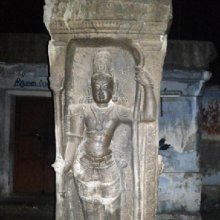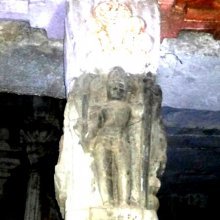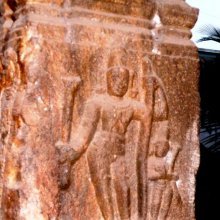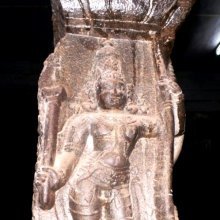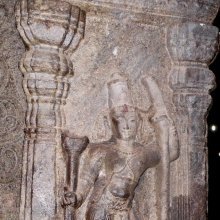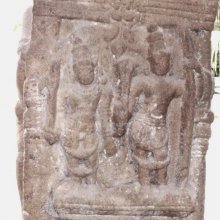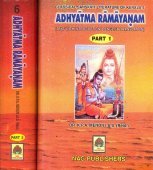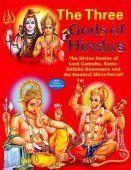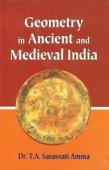Shrirama, Śrīrāma, Shri-rama: 13 definitions
Introduction:
Shrirama means something in Hinduism, Sanskrit, the history of ancient India. If you want to know the exact meaning, history, etymology or English translation of this term then check out the descriptions on this page. Add your comment or reference to a book if you want to contribute to this summary article.
The Sanskrit term Śrīrāma can be transliterated into English as Srirama or Shrirama, using the IAST transliteration scheme (?).
Images (photo gallery)
(+36 more images available)
In Hinduism
Ayurveda (science of life)
Rasashastra (Alchemy and Herbo-Mineral preparations)
Source: Wisdom Library: Rasa-śāstraŚrīrāma (श्रीराम) is the name of an Ayurvedic recipe defined in the fourth volume of the Rasajalanidhi (chapter 2, dealing with jvara: fever). These remedies are classified as Iatrochemistry and form part of the ancient Indian science known as Rasaśāstra (medical alchemy). However, as an ayurveda treatment, it should be taken twith caution and in accordance with rules laid down in the texts.
Accordingly, when using such recipes (e.g., śrīrāma-rasa): “the minerals (uparasa), poisons (viṣa), and other drugs (except herbs), referred to as ingredients of medicines, are to be duly purified and incinerated, as the case may be, in accordance with the processes laid out in the texts.” (see introduction to Iatro chemical medicines)

Āyurveda (आयुर्वेद, ayurveda) is a branch of Indian science dealing with medicine, herbalism, taxology, anatomy, surgery, alchemy and related topics. Traditional practice of Āyurveda in ancient India dates back to at least the first millenium BC. Literature is commonly written in Sanskrit using various poetic metres.
Purana and Itihasa (epic history)
Source: archive.org: Puranic EncyclopediaŚrīrāma (श्रीराम).—See under Rāma.
Source: Shodhganga: The saurapurana - a critical studyŚrīrāma (श्रीराम) is another name for Rāma: one of the four sons of Daśaratha who is the grandson of Raghu, according to the Vaṃśānucarita section of the 10th century Saurapurāṇa: one of the various Upapurāṇas depicting Śaivism.—Accordingly, [...] Raghu was the son of Dīrghabāhu. The son of Raghu was very famous from whom Daśaratha was born. Daśaratha had four sons who were religious and famous in the world. They were Rāma (Śrīrāma), Bharata, Lakṣmaṇa and Śatrughna. All of them were devoted to Lord Mahādeva.

The Purana (पुराण, purāṇas) refers to Sanskrit literature preserving ancient India’s vast cultural history, including historical legends, religious ceremonies, various arts and sciences. The eighteen mahapuranas total over 400,000 shlokas (metrical couplets) and date to at least several centuries BCE.
Pancaratra (worship of Nārāyaṇa)
Source: archive.org: Isvara Samhita Vol 5Śrīrāma (श्रीराम) refers to one of the various Vibhava manifestations according to the Īśvarasaṃhitā 24.343-344.—Accordingly, “He (Śrīrāma) alone is to be meditated upon who destroyed for the sake of Yogins the dreadful demon of mind, having ten heads with the multitude arrows of discrimination. He is the soul of the universe. His radiance (colour) is like that of the water-taken cloud. His eyes are like red lotus. His hands are marked bear by the bow and arrows”.
These Vibhavas (e.g., Śrīrāma) represent the third of the five-fold manifestation of the Supreme Consciousness the Pāñcarātrins believe in. Note: Kṛṣṇa is represented here more as a guide and instructor of people than as a child in Gokula.

Pancaratra (पाञ्चरात्र, pāñcarātra) represents a tradition of Hinduism where Narayana is revered and worshipped. Closeley related to Vaishnavism, the Pancaratra literature includes various Agamas and tantras incorporating many Vaishnava philosophies.
Shilpashastra (iconography)
Source: Shodhganga: The significance of the mūla-beras (śilpa)Śrīrāma or simply Rāma is the name of a deity depicted at Ramaswamy Temple in Kumbakonam (Kumbhakonam), representing a sacred place for the worship of Viṣṇu.—(a) In the sannidhi for Rāma, there are icons of Rāma, Sītā, Lakṣmaṇa and Hanumān. [...] The mūla-bera of Śrīrāma is found seated in sukhāsana with two hands. The right hand holds vyākhyāna-mudrā and the left hand is in kaṭaka-hasta. Sītā is found seated to the left of Rāma in sukhāsana posture with the right leg folded and left leg hanging. (b) In front of the stone images are the utsava-mūrti of Rāma, Sītā, Lakṣmaṇa, Bharata, Satrukguṇa and Hanumān. Rāma is found in standing posture with dhanur-hasta in the left hand and kaṭaka-hasta in the right hand.
The images of Rāma Sītā and Lakṣmana are made out of stone. While depicting in dancing, Rāma and Lakṣmaṇa are found in samapāda-sthānaka with the right hand in kapittha-hasta and the left hand in śikhara-hasta.

Shilpashastra (शिल्पशास्त्र, śilpaśāstra) represents the ancient Indian science (shastra) of creative arts (shilpa) such as sculpture, iconography and painting. Closely related to Vastushastra (architecture), they often share the same literature.
Vedanta (school of philosophy)
Source: Shodhganga: Siva Gita A Critical StudyŚrīrāma (श्रीराम) or Śrīrāmagītā refers to one of the sixty-four Gītās commonly referred to in Hindu scriptures.—Gītā is the name given to certain sacred writings in verse (often in the form of a dialogue) which are devoted to the exposition of particular religious and theosophical doctrines. Most of these Gītās [i.e., Śrīrāma-gītā] originate from the Mahābhārata or the various Purāṇas.

Vedanta (वेदान्त, vedānta) refers to a school of orthodox Hindu philosophy (astika), drawing its subject-matter from the Upanishads. There are a number of sub-schools of Vedanta, however all of them expound on the basic teaching of the ultimate reality (brahman) and liberation (moksha) of the individual soul (atman).
Natyashastra (theatrics and dramaturgy)
Source: Shodhganga: Elements of Art and Architecture in the Trtiyakhanda of the Visnudharmottarapurana (natya)Śrīrāma (श्रीराम) or Śrīrāmāvatāra refers to one of the Daśāvatāra (“ten incarnations”) (of Lord Viṣṇu) to which are assign various hand gestures (in Indian Dramas), according to the Viṣṇudharmottarapurāṇa, an ancient Sanskrit text which (being encyclopedic in nature) deals with a variety of cultural topics such as arts, architecture, music, grammar and astronomy.—In the Hindu scriptures, different stories are found, related to lord Viṣṇu, where we find the magnanimity of different incarnations of lord Viṣṇu. Moreover, a great influence of these ten incarnations of lord Viṣṇu (e.g., Śrīrāma-avatāra) seems to fall in the field of Dance also.

Natyashastra (नाट्यशास्त्र, nāṭyaśāstra) refers to both the ancient Indian tradition (shastra) of performing arts, (natya—theatrics, drama, dance, music), as well as the name of a Sanskrit work dealing with these subjects. It also teaches the rules for composing Dramatic plays (nataka), construction and performance of Theater, and Poetic works (kavya).
General definition (in Hinduism)
Source: WikiPedia: HinduismŚrīrāma (श्रीराम).—Also knew as Rama, Ramachandra or Sri Rama. Hanumana tells Bhima how he was deeply thrilled when he happened to touch Rama's body. This king of Ayodhya was banished to the forest for fourteen years, killed Ravana the king of Lanka who abducted his wife, Sita.
India history and geography
Source: Cologne Digital Sanskrit Dictionaries: Indian Epigraphical GlossaryŚrī-Rāma.—(ASLV), sign manual of some kings of Vijaya- nagara who often wrote Śrī-Virūpākṣa for the purpose. Note: śrī-rāma is defined in the “Indian epigraphical glossary” as it can be found on ancient inscriptions commonly written in Sanskrit, Prakrit or Dravidian languages.

The history of India traces the identification of countries, villages, towns and other regions of India, as well as mythology, zoology, royal dynasties, rulers, tribes, local festivities and traditions and regional languages. Ancient India enjoyed religious freedom and encourages the path of Dharma, a concept common to Buddhism, Hinduism, and Jainism.
Languages of India and abroad
Sanskrit dictionary
Source: Cologne Digital Sanskrit Dictionaries: Shabda-Sagara Sanskrit-English DictionaryŚrīrāma (श्रीराम).—m.
(-maḥ) Ramachandra. E. śrī celebrated, and rāma Rama.
Source: Cologne Digital Sanskrit Dictionaries: Monier-Williams Sanskrit-English Dictionary1) Śrīrāma (श्रीराम):—[=śrī-rāma] [from śrī] m. the divine Rāma id est. Rāma-candra (whose name in this form is used as a salutation by those who worship Viṣṇu in this Avatāra), [Horace H. Wilson]
2) [v.s. ...] Name of an author, [Catalogue(s)]
Source: Cologne Digital Sanskrit Dictionaries: Yates Sanskrit-English DictionaryŚrīrāma (श्रीराम):—[śrī-rāma] (maḥ) 1. m. Rāṃchandra.
[Sanskrit to German]
Sanskrit, also spelled संस्कृतम् (saṃskṛtam), is an ancient language of India commonly seen as the grandmother of the Indo-European language family (even English!). Closely allied with Prakrit and Pali, Sanskrit is more exhaustive in both grammar and terms and has the most extensive collection of literature in the world, greatly surpassing its sister-languages Greek and Latin.
See also (Relevant definitions)
Starts with: Shri-ramajayam, Shriramacandra, Shriramagita, Shriramakalpadruma, Shriramamangala, Shriramamishra, Shriramana, Shriramanavami, Shriramanavaminirnaya, Shriramanavamiprashamsa, Shriramani, Shriramanucam, Shriramapaddhati, Shriramaraksha, Shriramastuti, Shriramavatara.
Ends with: Jayashrirama.
Full-text (+194): Ramanavami, Rama, Angada, Sita, Shriramastuti, Shriramamangala, Shriramaraksha, Shriramakalpadruma, Shriramanavaminirnaya, Shriramapaddhati, Sugriva, Mohaka, Dashamukharavana, Shri rama, Shriramodanta, Prasushruta, Ayodhya, Dvivida, Hanumana, Nandigrama.
Relevant text
Search found 48 books and stories containing Shrirama, Śrī-rāma, Śrīrāma, Shri-rama, Srirama, Sri-rama; (plurals include: Shriramas, rāmas, Śrīrāmas, ramas, Sriramas). You can also click to the full overview containing English textual excerpts. Below are direct links for the most relevant articles:
Animal Kingdom (Tiryak) in Epics (by Saranya P.S)
Chapter 3.2 - The story of Jatayu (Bird characters, part 2)
Chapter 3.13 - Minor Monkey characters
Chapter 3.12 - The story of Sugriva (Monkey characters, part 6)
Garga Samhita (English) (by Danavir Goswami)
Verse 1.4.51 < [Chapter 4 - Description of Questions About the Lord’s Appearance]
Verse 1.6.42 < [Chapter 6 - Description of Kaṃsa’s Strength]
Verse 5.17.13 < [Chapter 17 - The Gopis Describe Their Remembrance of Sri Krsna]
Chaitanya Bhagavata (by Bhumipati Dāsa)
Verse 3.8.36 < [Chapter 8 - Mahāprabhu’s Water Sports in Narendra- sarovara]
Verse 1.2.34 < [Chapter 2 - The Lord’s Appearance]
Verse 3.8.125-126 < [Chapter 8 - Mahāprabhu’s Water Sports in Narendra- sarovara]
Tiruvaymoli (Thiruvaimozhi): English translation (by S. Satyamurthi Ayyangar)
Pasuram 8.6.3 < [Section 6 - Sixth Tiruvaymoli (Elliyum kalaiyum)]
Introduction to Section 2.7 < [Section 7 - Seventh Tiruvaymoli (kecavan tamar)]
Pasuram 1.10.2 < [Section 10 - Tenth Tiruvaymoli (Poru ma nil patai)]
Ramayana of Valmiki (by Hari Prasad Shastri)
Chapter 33 - Shri Rama goes with Sita and Lakshmana to King Dasaratha’s palace < [Book 2 - Ayodhya-kanda]
Chapter 1 - Shri Narada relates to Valmiki the story of Rama < [Book 1 - Bala-kanda]
Parables of Rama (by Swami Rama Tirtha)
Related products
(+1 more products available)
